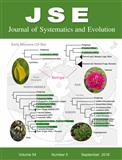Xiao-Ming Zheng, Fu-Qing Wu, Xin Zhang, Qi-Bing Lin, Jie Wang, Xiu-Ping Guo, Cai-Lin Lei, Zhi-Jun Cheng, Cheng Zou, Jian-Min Wan
The PEBP family of proteins, which encode a phosphatidyl ethanolamine-binding protein (PEBP) domain, serve as a hub in the network of integrating environmental and developmental signals to regulate flowering in all angiosperms. To understand how PEBP duplication genes arose and evolved during plant evolution, we identified 259 genes involved in the PEBP domain from 25 species, including angiosperms, gymnosperms, and embryophytes. We found that plant PEBP genes could be divided into three monophyletic groups, including FT-like, TFL-like and MFT-like subgroups. Based on the phylogeny, FT-like and TFL-like subgroups split before the angiosperm divergence. The likelihood ratio test indicates that the FT-like clade is significantly different in Ka/Ks with TFL-like and MFT-like clades. We found this shift in mutation might be attributed to the positive selection imposed on the fourth exon of recent FT duplications. Divergent expression patterns of FTparalogs indicated that they had undergone subfunctionalization after duplication. In addition, some of the FT-like genes have been targets of selection during domestication in rice and maize, for which the flowering time is an important agronomic trait. These results imply potential recent positive selection on FT-like genes with potential to increase the prevalence of novel functional alleles leading to extensive plant flowering time diversity and adaptation to environmental changes.

